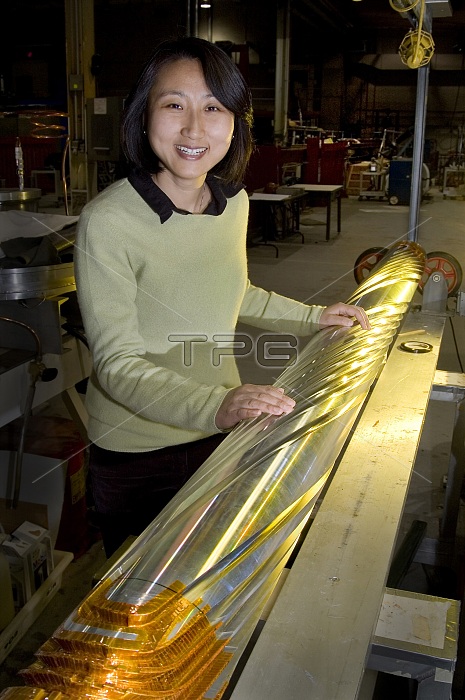
Particle physicist Mei Bei, alongside specialized sets of magnets called "Siberian snakes". The magnets' corkscrew-like design causes the direction of the magnetic field to spiral along the direction of the beam. As the beam moves through the two snakes in each of RHIC's 2.4-mile-circumference rings, the magnetic field flips the polarization, or direction of spin, and simultaneously averages out many smaller effects of Relativistic Heavy Ion Collider (RHIC) accelerator magnets, which otherwise would depolarize the proton beams. This allows the scientists to maintain stable polarization of the beam. Researchers at the RHIC are making progress in answering a fundamental question that has long puzzled physicists: Where do protons get their spin, a property of elementary particles as basic as mass and electrical charge? Physicists have long thought that the spin of a proton was simply the sum of the spins of its three component quarks. But experiments have shown that the quarks account for only about 20 percent of the proton's spin. That has left the scientists with a puzzle: What accounts for the missing 80 percent?
| px | px | dpi | = | cm | x | cm | = | MB |
Details
Creative#:
TOP22288571
Source:
達志影像
Authorization Type:
RM
Release Information:
須由TPG 完整授權
Model Release:
No
Property Release:
No
Right to Privacy:
No
Same folder images:

 Loading
Loading